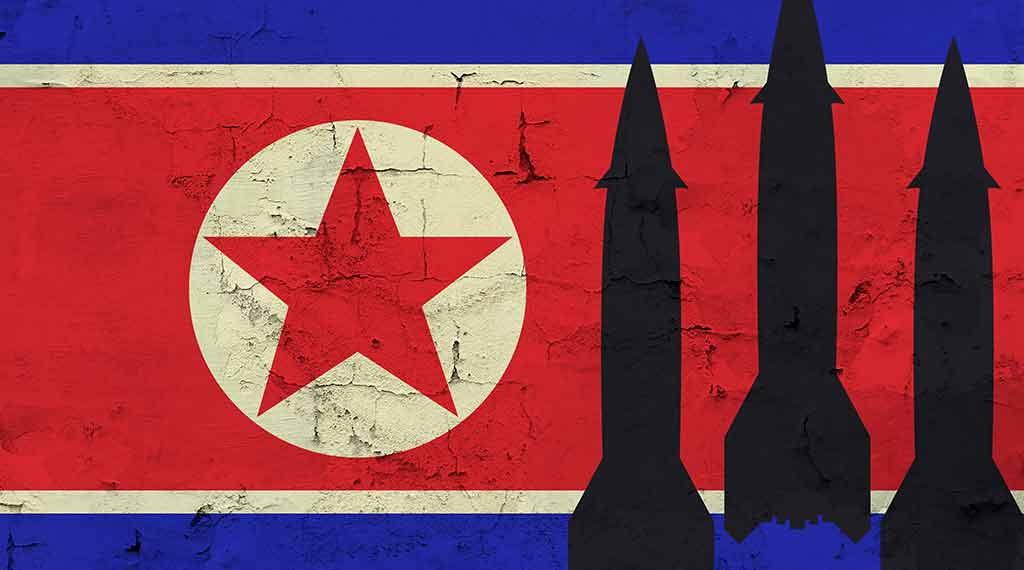
This week, North Korea spoke at a UN Security Council (UNSC) meeting for the first time.
North Korea Ambassador Kim Song claimed that Washington’s action was bringing the Korean peninsula “to the brink of nuclear war,” at the emergency meeting requested by the U.S., France, Albania, Malta, Japan, and the United Kingdom.
On Wednesday, Pyongyang carried out a second test of its Hwasong-18 solid-fuel intercontinental ballistic missile (ICBM) in the country’s latest provocation.
While North Korean state-run media outlets described the ICBM launch as a warning to America, Ambassador Kim claimed that the test was merely a “warranted exercise” to “safeguard the security of our state.” State media KCNA condemned ongoing joint drills between South Korea and the U.S., calling them “a trigger for driving the situation on the Korean peninsula to the point of explosion.”
The Washington-Seoul Partnership is Angering Pyongyang
Since March, Seoul and Washington have been participating in a series of military drills, including air and sea exercises involving a U.S. nuclear-powered aircraft carrier in addition to B-52 and B-1 strategic bombers.
Roughly 2,500 troops and more than 600 weapons systems including attack helicopters, fighter jets, and main battle tanks (MBTs) participated in the drills, comprising the largest joint exercise between the two countries in years.
Intended to mark 70 years of U.S.-South Korean relations, the drills coincided with Pyongyang’s escalating hostilities in the region. Since the start of 2022, North Korea has launched more than 100 missiles. While Kim Jong Un’s regime claims that this ramp-up is in response to the U.S.-South Korea partnership, industry experts assert that an extended ballistic missile arsenal is the true objective for Pyongyang. Analysts agree that North Korea is racing to further develop its missile and nuclear force with ICBMs, submarine-launched, and tactical nuclear weapons.
What is the Hwasong-18?
The Hwasong-18 is a type of solid-fuel long-range missile that is more difficult to detect and intercept than Pyongyang’s other liquid-fueled ICBMs.
As explained by Reuters, “Solid propellants are a mixture of fuel and oxidizer. Metallic powders such as aluminum often serve as the fuel, and ammonium perchlorate, which is the salt of perchloric acid and ammonia, is the most common oxidizer.”
Although liquid propellants enable greater power, they require extra weight and more complex technology. Industry experts have noted that Pyongyang’s successful Hwasong-18 tests are significant since the country does not have experience with other solid-propellant missiles.
In the Hermit Kingdom’s latest ICBM test launch, the Hwasong-18 flew roughly 620 miles at an altitude of over 3,700 miles. Notably, the missile was airborne for over 74 minutes, the longest flight time ever recorded. Kim Jong Un’s sister claimed that the launch was a response to “illegal U.S. spy drones” and reconnaissance planes “intruding” on the country’s exclusive economic zone. However, both Washington and Seoul have insisted that any aerial maneuvers were legal and routine in nature.
Ahead of the missile launch, 31 North Atlantic Treaty Organization (NATO) members issued the Vilnius Summit Communique, urging Pyongyang to terminate its nuclear weapons program. Obviously, it appears Pyongyang is nowhere near acquiescing to this demand.
- US Stands Up New Drone Strike Force in the Middle East - December 9, 2025
- Has Russia Finally Sold its Su-35s to Iran? - December 2, 2025
- Iran’s Growing Missile Arsenal Is a Challenge for Israel - November 18, 2025
